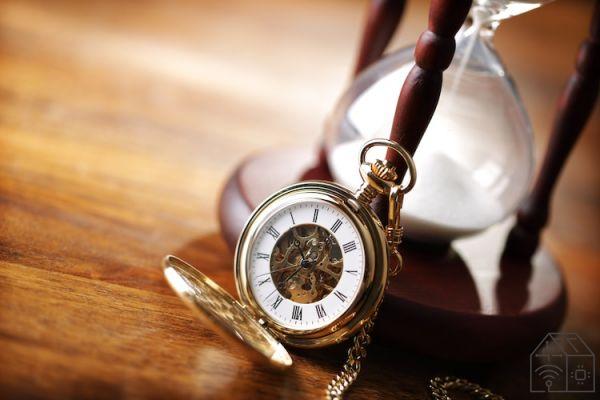
As the devoted readers of the column know, it is our habit to start this type of article by giving you the definition of the topic treated from time to time. To circumscribe it and to remove any doubts. And also to discover how often the same definition already clarifies a lot of a certain area.
But today we will talk about how the measurement of time has changed, which encompasses such a vast set of sub-topics that it is really difficult to do the undertaking.
Indeed, let's just say that time measurement is the set of techniques and tools that, throughout history, man has adopted to keep track of the passage of time. An operation which, moreover, can be of public or private utility.
So let's go to the origins of time measurement, and then discover how it has changed over the course of history.
At the origins of time measurement
It goes without saying that human life has always been conditioned by time: by the alternation of day with night and by the cycle of the seasons.
The first and simplest way to measure the passing of daylight hours was to observe the position of the sun. Although the very first artifact that (perhaps) tells us about the relationship between man and time refers rather to the moon: it is a sheet of mammoth ivory discovered in France and dating back to about 30.000 years BC. primitive lunar calendar.

The sexagesimal system
To understand how the measurement of time has changed, it must first be considered that the sexagesimal system (i.e. the one currently in force, for which the hour is made up of sixty minutes and the minute of sixty seconds) has very ancient origins. It is in fact to be attributed to the Sumerians, who invented it around the twenty-first century BC
The Egyptians were responsible for the subdivision of the day into two parts of 12 hours each.
The measuring tools
But how has the measurement of time changed with regard to the tools used?
The water hourglass is one of the most ancient objects, possibly first used in the Great Temple of Amun, Egypt, between the nineteenth and fourteenth centuries BC
The first water clocks, introduced in Mesopotamia, should date back to a similar date.
We also owe the birth of sand hourglasses to Egypt. While a splendid example of a primitive clock, or if we want a rudimentary astronomical observatory, could be the site of Stonehenge, which dates back to an era between the fourth and second centuries BC.
The oldest sundial, found in Egypt, is instead datable to around 1.500 BC
The first mechanical watches
We must necessarily make a mighty leap forward (in time, in fact) and leave out the very interesting and different ways in which time was measured in Greek-Roman antiquity but also, for example, in China (where clocks were also developed). incense) or in Persia (where the fenjaan, a particular water clock, was invented).
It was in the fourteenth century that the first mechanical watches were born, used primarily by medieval monks (together with bells) to mark the portions of the day to be dedicated to prayer and work.
The Salisbury Cathedral Clock from 1386 is still in working order and is considered to be one of the first clocks in the world.
The first wrist watches
A fundamental turning point in understanding how time measurement has changed is the transition, we could say, from a public to a private dimension. A clear sign of the birth of new professions, a new aesthetic and a new idea of luxury.
They were introduced already at the end of the sixteenth century, and for at least a couple of centuries they were an object of almost exclusively female relevance. Men more willingly wore the pocket watch, also more informally called onion.
The end of the nineteenth century will be a turning point, both because wristwatches are worn by the military (for synchronization of maneuvers) and because the first major luxury watchmaking brands are born. And it's the boom.

The advent of digital
During the twentieth century, wall, wrist and alarm clocks were found in an ever-increasing number of private homes.
The wristwatch is perfected, quartz and electronic models are born based on the movement of a tuning fork. But the real revolution began in 1970, with the introduction of the digital clock. Not necessarily on the wrist: alarm clocks and all time devices will become digital, from the one present in the most common household appliances to that of car radios.
Discount
 The measures of time
The measures of time
- Gangemi, Paolo (Author)
The measurement of time today
To understand how time measurement has changed in recent years, just look around us. Luxury watchmaking resists, just as the glorious clocks of the bell towers resist, complete with hour chimes, and the old sundials. But now almost all of us look at the time from our smartphone or, like whoever is writing this article, from your computer.
Smartwatches now act as reminders and personal trainers, to the point that we forget the original function of that bizarre object consisting of a case and a strap.
Time makes us more and more anxious, our lives are more and more crowded and fragmented. And the strange thing - who would have thought that? - is that a second always lasts a second: no more, no less.


























